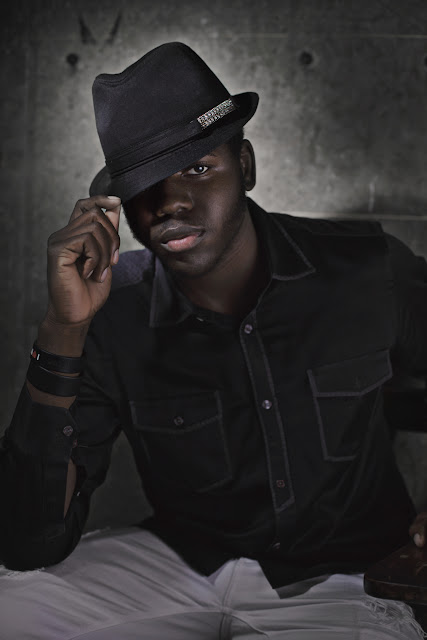Five years ago – before my photo project, The People Of Detroit, single-handedly fixed the city's image problem and spurred an era of redevelopment known as "New Detroit" – I took a bike ride to Eastern Market. 80 degrees. 2 p.m. The farmers market was thick with cars and pedestrians. I started to walk my bike.
Smoke suddenly swirled around me. Like some sort of reverse tear gas, the peppery cumin effusion drew me closer to its source: a landmark barbecue spot called Bert's Market Place. I arrived just in time to hear the African-American grillmaster tell a customer Detroit's newly installed bike lanes were put there for "white people" (where "white people" is shorthand for educated, relatively affluent people of European descent who describe themselves using terms like "urbanist").
I was confused. I was a black person. I just used bike lanes to get to Eastern Market. How did I get here? How would I get home?
Speaking of home, the one I grew up in was government subsidized. The high school I graduated from had no windows (to mitigate the distracting influence of sunshine and fresh air). The high school bully I beat up in gym class eventually went to prison for robbing a liquor store. The high school bully who beat me up after shop class would some months later rob a mentally disabled man who bagged groceries at A&P. He didn't go to prison. He was eventually taken off the streets – specifically, his driveway after someone shotgunned him to death.
I imagine the grillmaster had similar experiences. If experiences like this are someone's frame of reference, design can seem something rarefied. Abstract. The exclusive concern of the thick-frame eyeglass gentry. In a place where people struggle to avoid unemployment, homelessness, and armed robbers, design seems like a frivolity we can't afford to indulge.
Speaking of home, the one I grew up in was government subsidized. The high school I graduated from had no windows (to mitigate the distracting influence of sunshine and fresh air). The high school bully I beat up in gym class eventually went to prison for robbing a liquor store. The high school bully who beat me up after shop class would some months later rob a mentally disabled man who bagged groceries at A&P. He didn't go to prison. He was eventually taken off the streets – specifically, his driveway after someone shotgunned him to death.
I imagine the grillmaster had similar experiences. If experiences like this are someone's frame of reference, design can seem something rarefied. Abstract. The exclusive concern of the thick-frame eyeglass gentry. In a place where people struggle to avoid unemployment, homelessness, and armed robbers, design seems like a frivolity we can't afford to indulge.
The exact opposite is true.
Design is essential to quality of life in a city. Urban gardens reduce crime. Bike lanes reduce stress and waistlines. Public art reduces sadness. Good design is not a luxury. It is a necessity.
To illustrate this point, The People of Detroit partnered with the Detroit Creative Corridor Center to photograph and interview a cross section of Detroiters about the role design should play in the city's ongoing revitalization. This question is especially relevant now. Last year, Detroit was the first city to win the United Nations' UNESCO City of Design designation. This designation both celebrates the design history that created Detroit and the contemporary design projects that are creating Detroit anew.
Design is essential to quality of life in a city. Urban gardens reduce crime. Bike lanes reduce stress and waistlines. Public art reduces sadness. Good design is not a luxury. It is a necessity.
To illustrate this point, The People of Detroit partnered with the Detroit Creative Corridor Center to photograph and interview a cross section of Detroiters about the role design should play in the city's ongoing revitalization. This question is especially relevant now. Last year, Detroit was the first city to win the United Nations' UNESCO City of Design designation. This designation both celebrates the design history that created Detroit and the contemporary design projects that are creating Detroit anew.
It is in the utmost public interest that urban design initiatives like Murals in the Market, the Dequindre Cut , and The Greening of Detroit be sustained and expanded. Everyone needs good design. People from blighted, marginalized communities need it most.
---
Detroiters on Design
 |
“Design is the lifeblood of this city. It is a significant part of our rebirth.”
[audio]
 |
“I’m a bike commuter. I have benefitted tremendously from the increased attention paid to the commuting experience for bikers.”
[audio]
- Garlin Gilchrist, innovation director, City of Detroit
---
 |
| Mandisa Smith, artist, Detroit Fiber Works |
 |
“Design can be profound as long as it’s inclusive and respectful of the history that created Detroit.” [audio]
 |
| Joshua Smith, creative director, Who's That |
“Beautiful design is a tool that can make everyone’s life better.”
[audio]
 |
| Melvin Johnson, high school student, aspiring entertainer. |
“Design projects are already starting to have a positive impact on life in Detroit.”
[audio]
[audio]
- Melvin Johnson, high school student, aspiring entertainer.

No comments:
Post a Comment